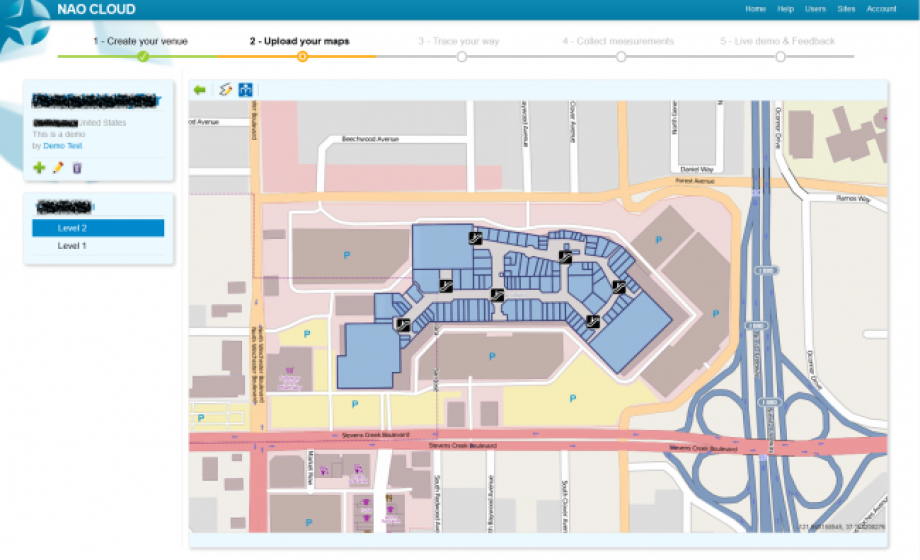
A little while ago we announced that Google had rolled out its indoor mapping feature to Google Maps in key Paris areas, like Charles De Gaulle Airport and Forum Les Halles. This came after the initial 2011 roll-out that Google did, starting with indoor mapping in the Mall of America. Now, in the past month, we’ve seen that the space is really heating up, with Apple having purchased WifiSLAM for a reported $20 Million(WSJ) last month, a startup working on Indoor positioning, but having seemingly not even released a product yet. With that in mind, I sat down to talk to Christian Carle, CEO of Polestar, a company founded in 2002 that has been working on GPS technology, and specifically Indoor GPS (or IPS), for over 10 years.
Indoor Positioning is not just WiFi-based positioning
In recent months, Carle says, many companies have been surfacing offering indoors GPS capabilities, either for 3rd party apps as an SDK, like Polestar does, or as an end-user app. Carle says it’s not nearly accurate enough to produce value, and the barrier to entry to the market is high, as the tinkering with algorithms for indoor positioning can take time. As a gross over-simplification, indoor positioning works by taking information from static frequency-emitting objects (like wifi hotspots, bluetooth objects, RFIDs, LED lights, etc.) and approximating the distance from that object to the individual (or their smartphone, in this case). After picking up millions of data points and distance relationships, indoor positioning tools can use a smartphone’s position to objects around it to approximate the user’s location. Of course, with smartphone components like accelerometers available, this can add to the precision of the toolset.
Given that their flagship product, NAO Cloud, is already getting data from 53 million square feet of malls in Europe, CDG airport, and, very soon, a large mall operator in the US, Pole Star is constantly gathering new data and improving its algorithm for indoor positioning. They are making use of Bluetooth Low Energy & other non-wifi positioning technologies that Carle says are essential.
He also pointed out that while some companies have come out using LED-based indoor positioning (IPS based off of LED lights that transmit information in lightwaves), this is a technology that Pole Star explored years ago and determined that the LED technology did not have wide-spread enough adoption to be worth investing in.
Pole Star’s NAO Cloud is currently available on both iOS and Android, available as an SDK to integrate into 3rd party applications. Their patent-pending “Blind” crowdsourcing engine allows users to continue to gather data over time, improving the engine’s accuracy constantly. Implementation of the service is entirely autonomous and can be done within a few hours.
The value behind IPS – Local Commerce
It’s a magic word – “local commerce” – and it’s at the heart of IPS. Carle talked about the wealth of data that NAO Cloud is generating – the most obvious is being able to push messages to users when they are right in front of a store – that’s the big fish. But then add on the the ability to tell retail store owners where users go before and after they come to your store. Future integration with mobile payments solutions could literally track 1000s of shoppers’ routes through shopping malls – the kind of data that retail chains will definitely pay for. Knowing where to position your next store in relation to competitors or complementary stores in order to optimize revenue – that’s a value you can measure and it strikes at the heart of Local Commerce.
From a user-perspective, I didn’t immediately see the value of IPS. Sure, i’d love to know the most direct route through the maze that is Forum Les Halles in order to get to the cinema, but that’s not a killer feature for me, so why would Forum Les Halles pay annually to have that in their mobile app. Now I see – i’m not the end-user, the retail stores are.
I’m sure we’ll eventually hit the “invading my personal space” point, but, personally, I don’t have a problem with that. I mean, if I didn’t want retail stores tracking my every move, I wouldn’t have a Club Card for every retail store I go to.

